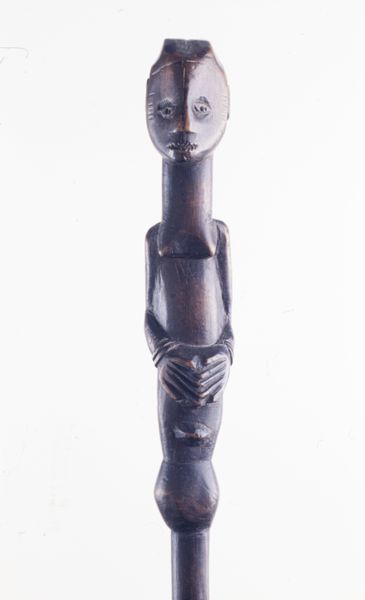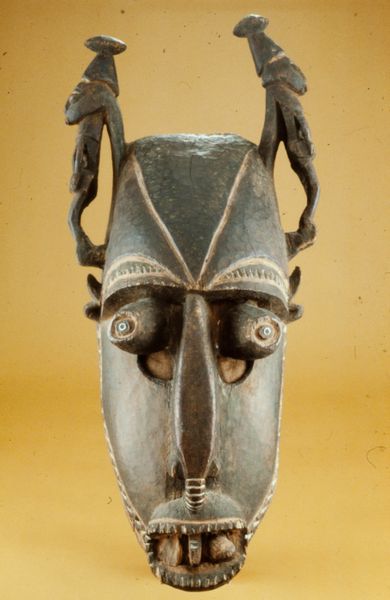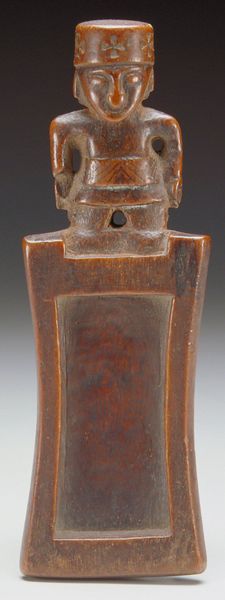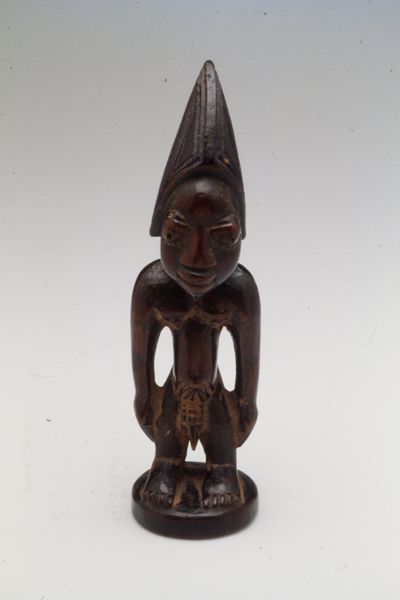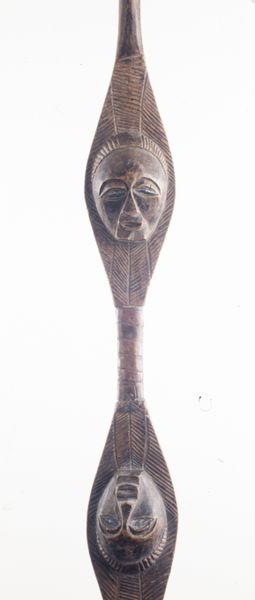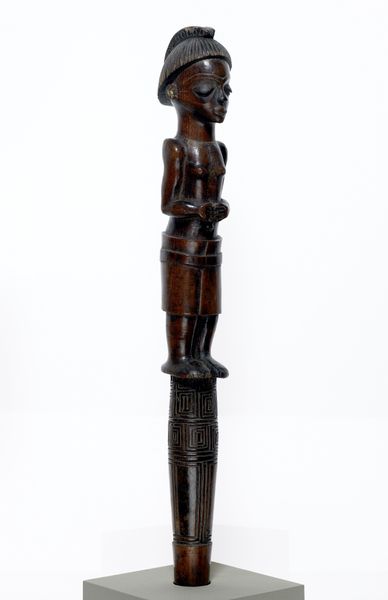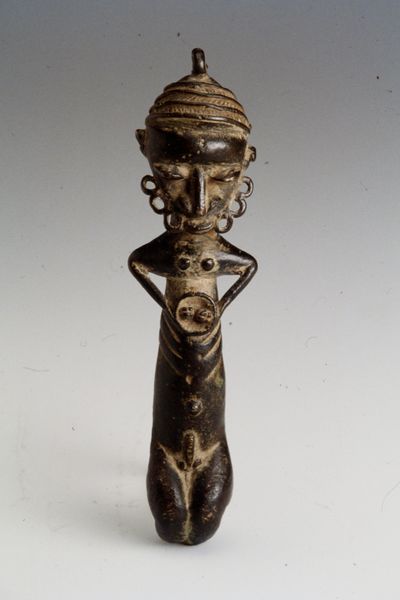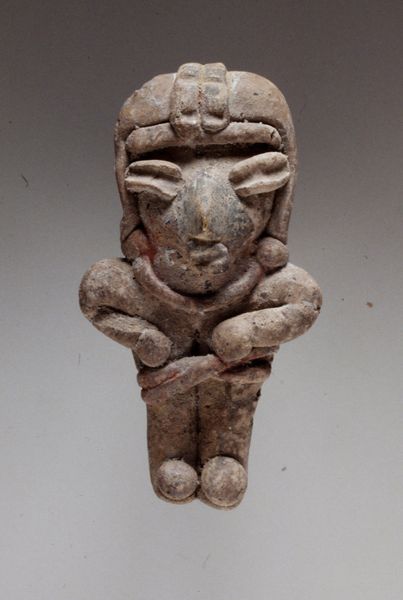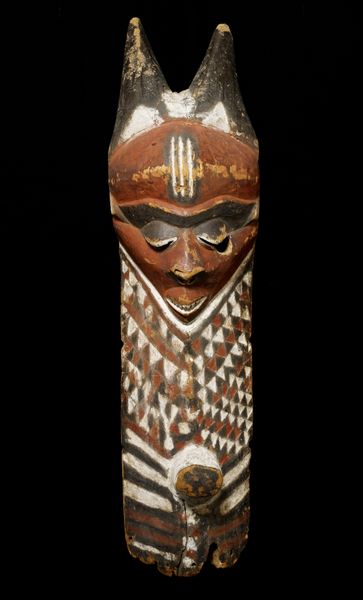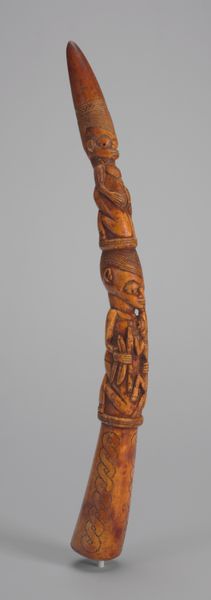
carving, sculpture, wood
#
carving
#
sculpture
#
figuration
#
sculpture
#
wood
#
indigenous-americas
Dimensions: 10 1/2 x 3 x 3 in. (26.7 x 7.6 x 7.6 cm)
Copyright: Public Domain
Editor: Here we have a "Miniature Totem Pole," dating back to the late 19th century, crafted by an artist from the Haida community. It is constructed from wood. It strikes me how imposing the figures feel, even at this smaller scale. What statements about Indigenous identity can we unpack from a piece like this? Curator: This pole, indeed, demands our attention to Haida identity. These miniature totem poles were often created for trade with Europeans, reflecting a complex interaction between cultural preservation and economic survival amid colonization. The figures—bear, raven, and possibly human—are ancestral crests embodying the rights, histories, and privileges of specific lineages. Consider how the carving, a visual language deeply rooted in oral traditions, encodes a history that resists erasure, but also had to navigate a fraught context with outside economic forces. Editor: So, it's both a declaration of cultural permanence and an act of adaptation? A negotiation of power, in a way? Curator: Precisely. How does understanding the act of commodification influence your reading of its artistic and cultural value? Editor: It complicates it, for sure. It makes me think about who this pole was really meant to speak to— the colonizers or future generations of its makers, as well as the ethics of interpreting a work divorced from its cultural setting and traditions. Curator: Exactly. It’s through these complicated layers of history, meaning, and use, that we truly see the ingenuity, cultural persistence, and political complexities embedded within even a small piece of art. Editor: I hadn't considered its market context and impact; I was laser focused on its bold visual appearance. Now, I think I appreciate how intertwined commerce, power, and art really are.
Comments
No comments
Be the first to comment and join the conversation on the ultimate creative platform.

